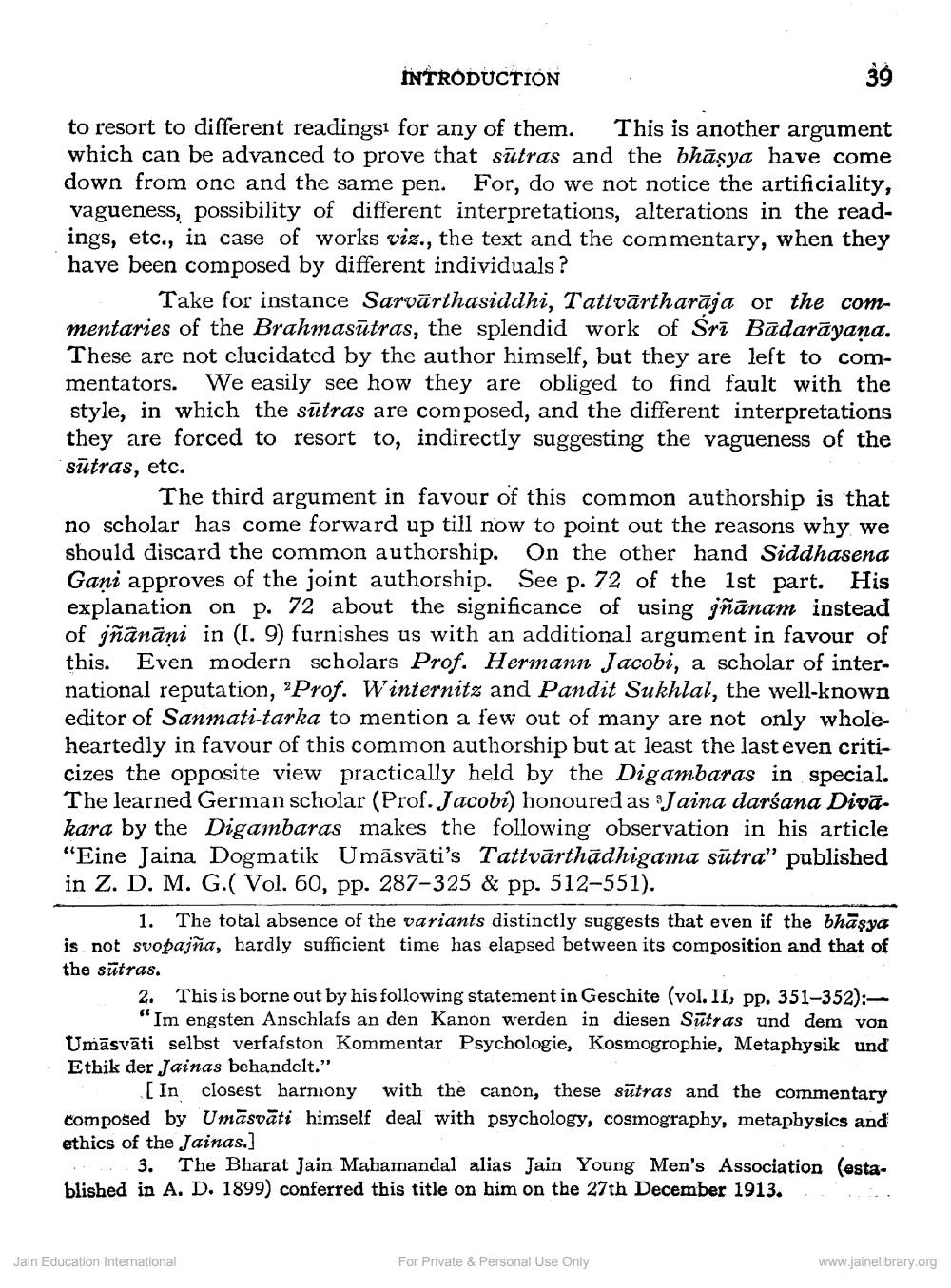________________
INTRODUCTION
to resort to different readingsı for any of them. This is another argument which can be advanced to prove that sūtras and the bhāsya have come down from one and the same pen. For, do we not notice the artificiality, vagueness, possibility of different interpretations, alterations in the readings, etc., in case of works viz., the text and the commentary, when they have been composed by different individuals?
Take for instance Sarvārthasiddhi, Tattvārtharāja or the commentaries of the Brahmasūtras, the splendid work of Śrī Bādarāyana.
These are not elucidated by the author himself, but they are left to com mentators. We easily see how they are obliged to find fault with the style, in which the sūtras are composed, and the different interpretations they are forced to resort to, indirectly suggesting the vagueness of the sutras, etc.
The third argument in favour of this common authorship is that no scholar has come forward up till now to point out the reasons why we should discard the common authorship. On the other hand Siddhasena Gani approves of the joint authorship. See p. 72 of the 1st part. His explanation on p. 72 about the significance of using jñānam instead of jñānāni in (I. 9) furnishes us with an additional argument in favour of this. Even modern scholars Prof. Hermann Jacobi, a scholar of inter national reputation, Prof. W'internitz and Pandit Sukhlal, the well-known editor of Sanmati-tarka to mention a few out of many are not only wholeheartedly in favour of this common authorship but at least the last even criticizes the opposite view practically held by the Digambaras in special. The learned German scholar (Prof. Jacobi) honoured as Jaina darśana Divā. kara by the Digambaras makes the following observation in his article "Eine Jaina Dogmatik Umāsvāti's Tattvārthādhigama sutra" published in Z. D. M. G.( Vol. 60, pp. 287-325 & pp. 512-551).
1. The total absence of the variants distinctly suggests that even if the bhāşya is not svopajña, hardly sufficient time has elapsed between its composition and that of the sūtras.
2. This is borne out by his following statement in Geschite (vol. II, pp. 351-352);
"Im engsten Anschlafs an den Kanon werden in diesen Sūtras und dem von Umāsvāti selbst verfafston Kommentar Psychologie, Kosmogrophie, Metaphysik und - Ethik der Jainas behandelt."
[In closest harniony with the canon, these sūtras and the commentary composed by Umāsvāti himself deal with psychology, cosmography, metaphysics and ethics of the Jainas.]
3. The Bharat Jain Mahamandal alias Jain Young Men's Association (established in A. D. 1899) conferred this title on him on the 27th December 1913...
Jain Education International
For Private & Personal Use Only
www.jainelibrary.org




